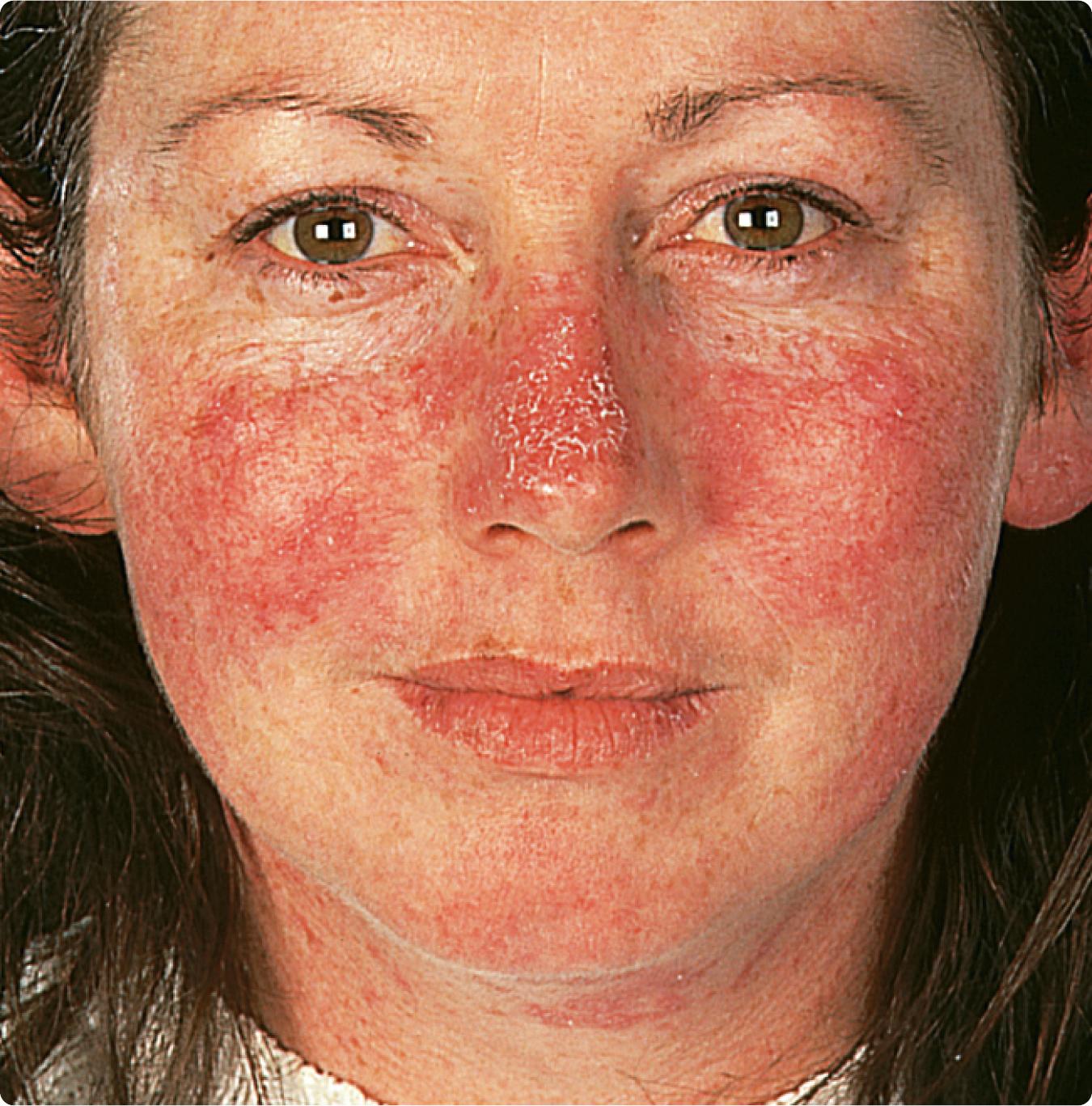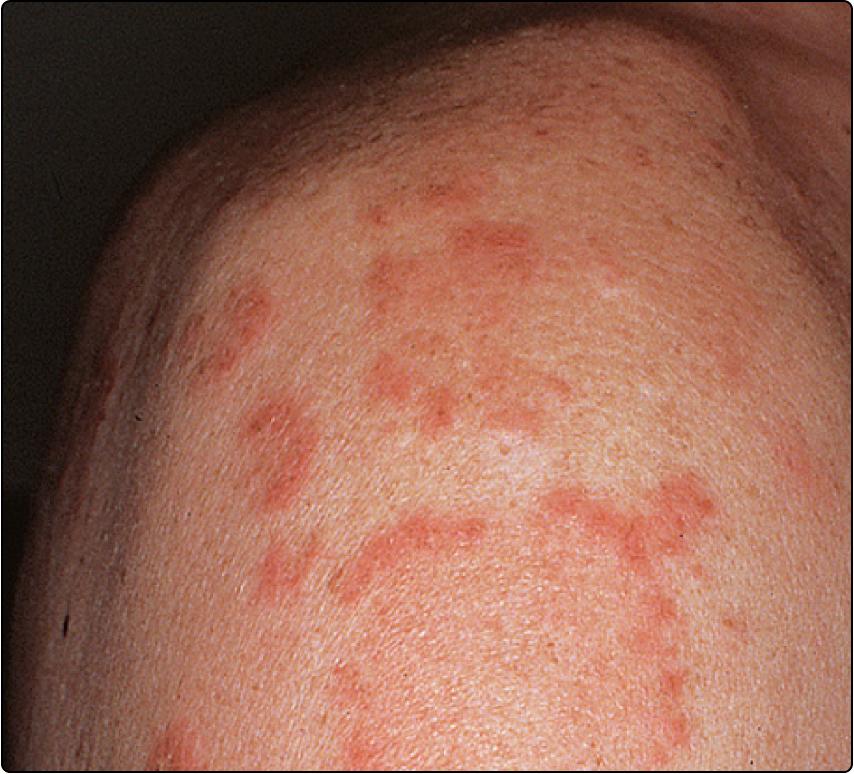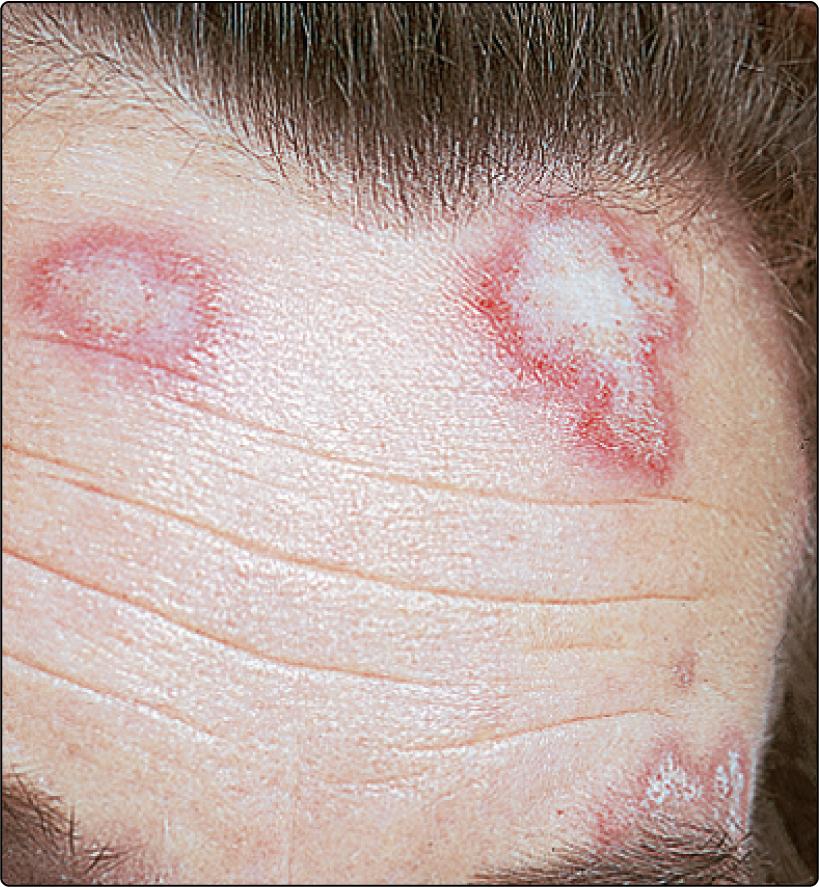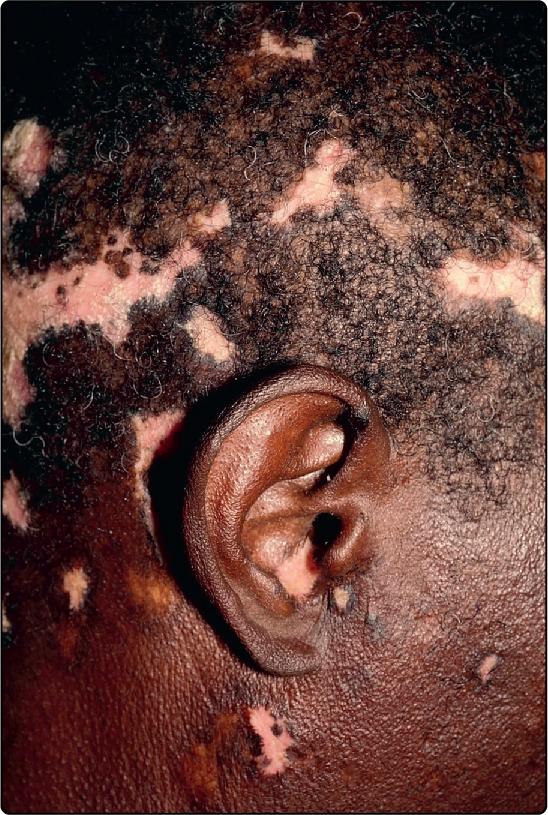Physical Address
304 North Cardinal St.
Dorchester Center, MA 02124
The inflammatory disorders of connective tissue often affect several organs, as in systemic lupus erythematosus (LE), but they may also involve the skin alone (e.g. discoid LE). Autoantibodies are a feature of these diseases, which can thus be regarded as ‘autoimmune’ Therefore, testing for the presence of autoantibodies including antinuclear antibody (ANA) staining (p. 163), double stranded (ds) or single stranded (ss) deoxyribonucleic acid (DNA) antibodies, and extractable nuclear antigens (ENA) panels (p. 163) are important investigations to distinguish the connective tissue diseases ( Fig 45.1 ).
LE represents a spectrum of cutaneous disease from scarring (discoid) to multisystem (systemic).
There is increasing evidence that the induction of autoantibodies against self-proteins is derived from an impaired ability to clear dying (apoptotic) cells. Both genetic (human leucocyte antigen [HLA]) and environmental (toxins, drugs, UV radiation, viruses) factors have been implicated in disease pathogenesis.
Discoid lesions show epidermal atrophy, hyperkeratosis and basal layer degeneration. Subacute lesions show greater atrophy but the other features are less evident. Systemic lesions have similar changes with dermal oedema and fibrinoid change, inflammatory infiltrate and sometimes vasculitis. Direct immunofluorescence shows a ‘lupus band’ at the dermoepidermal junction in lesional systemic and discoid LE, but this is also found in approximately 20% of healthy individuals on sun-exposed skin.
Skin signs are found in 80%. The facial butterfly eruption ( Fig. 45.2 ) is characteristic, but photosensitivity, discoid lesions, diffuse alopecia, mouth lesions and vasculitis also occur. Multisystem involvement with serological or haematological abnormalities must be demonstrated to diagnose systemic LE ( Table 45.1 ). The female : male ratio is 8 : 1.

| Organ | Involvement |
|---|---|
| Skin | Photosensitivity, facial rash, vasculitis, hair loss, Raynaud’s phenomenon |
| Blood | Anaemia, thrombocytopenia |
| Joints | Arthritis, tenosynovitis, calcification |
| Kidney | Glomerulonephritis, nephrotic syndrome |
| Heart | Pericarditis, endocarditis, hypertension |
| Central nervous system | Psychosis, infarction, neuropathy |
| Lungs | Pneumonitis, effusion |
The skin involvement is usually on the neck, trunk and arms. The erythema is non-scarring and may be papulosquamous or annular and resolves with hypopigmentation and telangiectasia ( Fig. 45.3 ). Mouth ulceration, livedo reticularis, periungal telangiectasia and Raynaud’s phenomenon may also be noted. Multisystem involvement can be seen, but is usually mild.

One or more round or oval plaques appear on the face, scalp or hands ( Fig. 45.4 ). The lesions are well demarcated, red, atrophic, scaly and show keratin plugs in dilated follicles. Scarring leaves alopecia on the scalp and hypopigmentation in those with a pigmented skin ( Fig. 45.5 ). Remission occurs in over 50%. Internal involvement is not a feature, and only 6% develop systemic LE. Women outnumber men by 2 : 1.


Become a Clinical Tree membership for Full access and enjoy Unlimited articles
If you are a member. Log in here